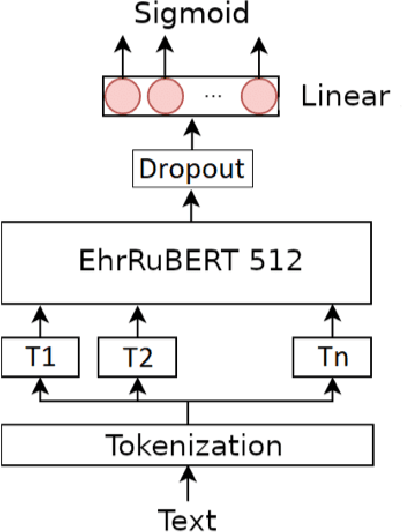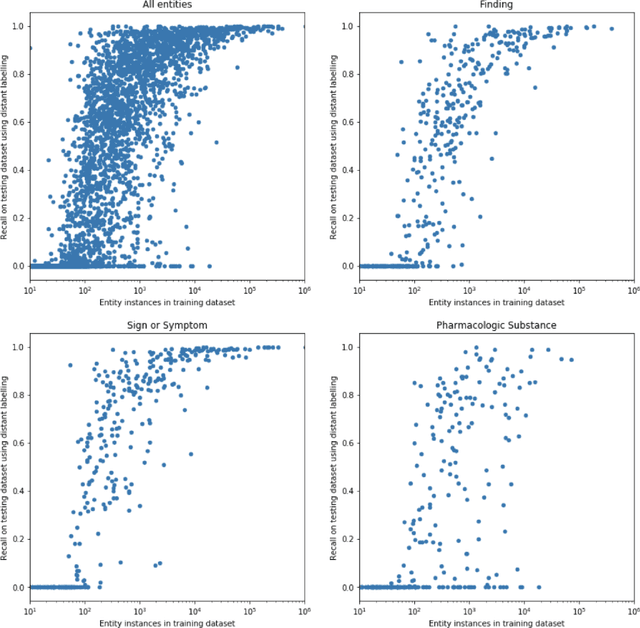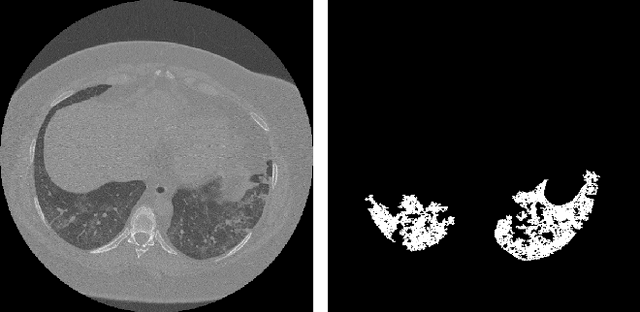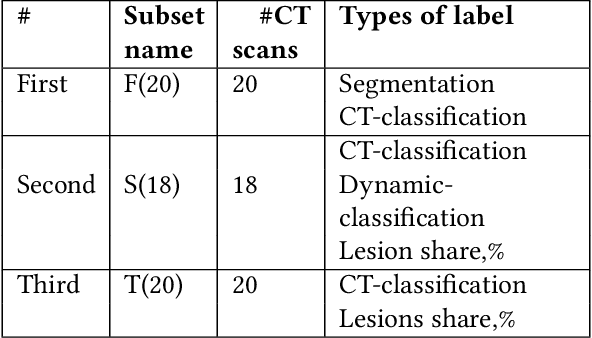Dmitry Umerenkov
Distantly supervised end-to-end medical entity extraction from electronic health records with human-level quality
Jan 25, 2022



Abstract:Medical entity extraction (EE) is a standard procedure used as a first stage in medical texts processing. Usually Medical EE is a two-step process: named entity recognition (NER) and named entity normalization (NEN). We propose a novel method of doing medical EE from electronic health records (EHR) as a single-step multi-label classification task by fine-tuning a transformer model pretrained on a large EHR dataset. Our model is trained end-to-end in an distantly supervised manner using targets automatically extracted from medical knowledge base. We show that our model learns to generalize for entities that are present frequently enough, achieving human-level classification quality for most frequent entities. Our work demonstrates that medical entity extraction can be done end-to-end without human supervision and with human quality given the availability of a large enough amount of unlabeled EHR and a medical knowledge base.
CoRSAI: A System for Robust Interpretation of CT Scans of COVID-19 Patients Using Deep Learning
May 25, 2021



Abstract:Analysis of chest CT scans can be used in detecting parts of lungs that are affected by infectious diseases such as COVID-19.Determining the volume of lungs affected by lesions is essential for formulating treatment recommendations and prioritizingpatients by severity of the disease. In this paper we adopted an approach based on using an ensemble of deep convolutionalneural networks for segmentation of slices of lung CT scans. Using our models we are able to segment the lesions, evaluatepatients dynamics, estimate relative volume of lungs affected by lesions and evaluate the lung damage stage. Our modelswere trained on data from different medical centers. We compared predictions of our models with those of six experiencedradiologists and our segmentation model outperformed most of them. On the task of classification of disease severity, ourmodel outperformed all the radiologists.
Predicting Clinical Diagnosis from Patients Electronic Health Records Using BERT-based Neural Networks
Jul 15, 2020



Abstract:In this paper we study the problem of predicting clinical diagnoses from textual Electronic Health Records (EHR) data. We show the importance of this problem in medical community and present comprehensive historical review of the problem and proposed methods. As the main scientific contributions we present a modification of Bidirectional Encoder Representations from Transformers (BERT) model for sequence classification that implements a novel way of Fully-Connected (FC) layer composition and a BERT model pretrained only on domain data. To empirically validate our model, we use a large-scale Russian EHR dataset consisting of about 4 million unique patient visits. This is the largest such study for the Russian language and one of the largest globally. We performed a number of comparative experiments with other text representation models on the task of multiclass classification for 265 disease subset of ICD-10. The experiments demonstrate improved performance of our models compared to other baselines, including a fine-tuned Russian BERT (RuBERT) variant. We also show comparable performance of our model with a panel of experienced medical experts. This allows us to hope that implementation of this system will reduce misdiagnosis.
Radiologist-level stroke classification on non-contrast CT scans with Deep U-Net
Mar 31, 2020


Abstract:Segmentation of ischemic stroke and intracranial hemorrhage on computed tomography is essential for investigation and treatment of stroke. In this paper, we modified the U-Net CNN architecture for the stroke identification problem using non-contrast CT. We applied the proposed DL model to historical patient data and also conducted clinical experiments involving ten experienced radiologists. Our model achieved strong results on historical data, and significantly outperformed seven radiologist out of ten, while being on par with the remaining three.
 Add to Chrome
Add to Chrome Add to Firefox
Add to Firefox Add to Edge
Add to Edge